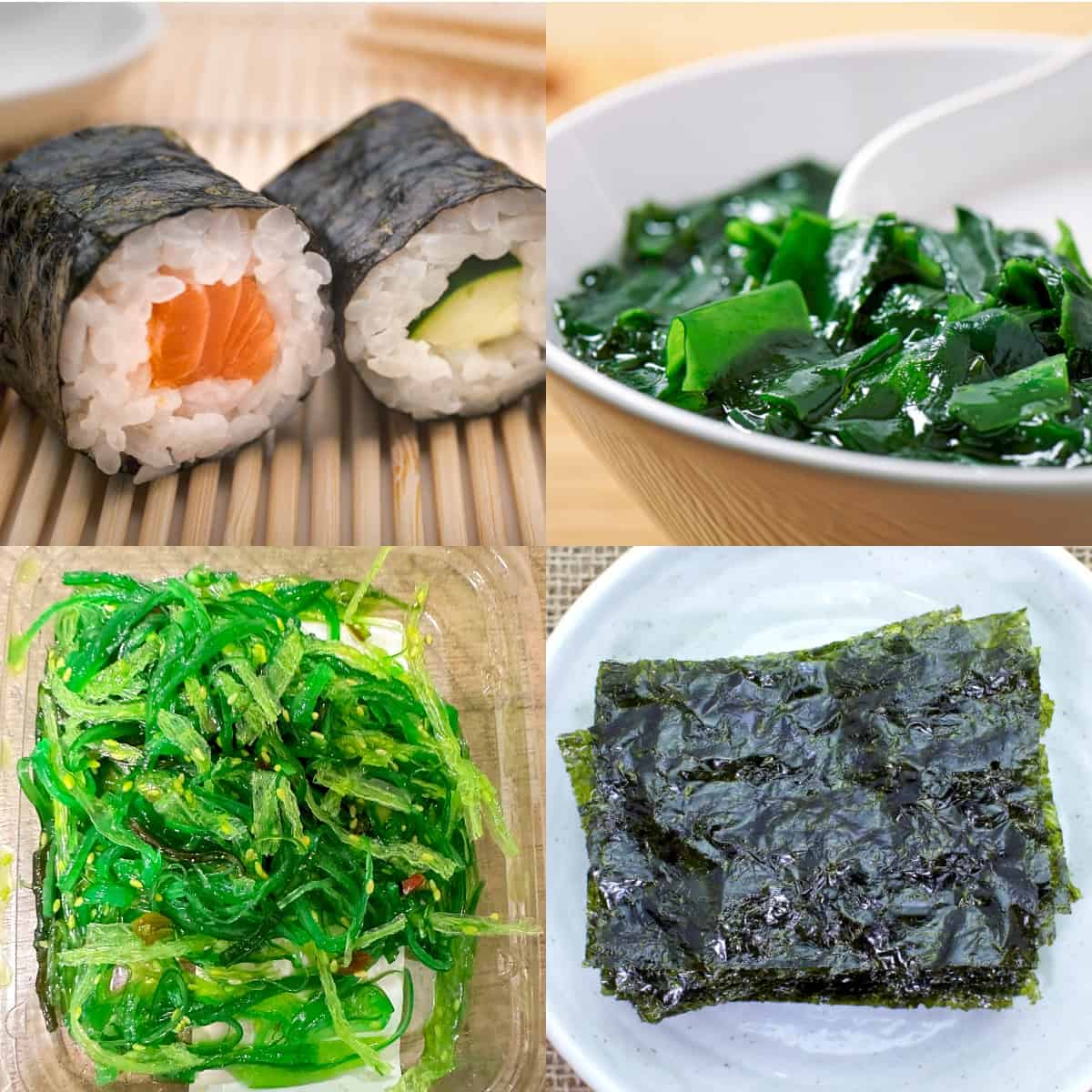Would you happen to know how to store seaweed? Seaweed is a popular food item in many cultures. Its excellent nutritional value and unique texture make it a versatile ingredient in many dishes. However, it requires a proper storage approach. Otherwise, it only lasts for a while. When it comes to the shelf life of this side dish, it varies based on the variety, storage method, and certain other factors. You can just read on to learn more.

Jump To
What is seaweed?
Seaweed is a popular red algae food item used in many cultures for centuries. It is a good source of fiber, rich in minerals and nutrients, and very versatile, making it a healthy ingredient for a wide variety of dishes. It is commonly used in Japanese cuisine and in snacks, sushi, salads, and soups, e.g., miso soup, etc., and adds a unique texture and flavor. Seaweed is also a popular ingredient in vegan diets and sea vegetables dishes in the United States.
How long does seaweed last?
The shelf life of seaweed can vary depending on the type of seaweed and how it is stored. Generally, fresh seaweed that has not been processed or cooked will last only a few days in the fridge, typically around 3-5 days.
However, if you have dried or dehydrated seaweed, it can last much longer. Properly stored, dried seaweed can last from several months to a year. To maximize the shelf life of dried seaweed, it should be kept in an airtight container in a cool, dry place away from direct sunlight. The shelf life of edible seaweed also varies greatly depending on its preparation. There are three common varieties: fresh seaweed, plain, dried seaweed, and dried and seasoned seaweed. These different varieties have different shelf lives. The storage method also affects how long seaweed lasts.
It's important to note that if you see any signs of spoilage, such as a slimy texture or unpleasant odor, you should not consume the seaweed, even if it has been stored properly. When in doubt, it's best to err on the side of caution and discard any seaweed that appears to be spoiled.
How long does fresh seaweed last?
Fresh seaweed refers to seaweed that has not been dried or processed. You can easily find it in the best quality in Asian grocery stores and supermarkets. Fresh seaweed salad has a delicate flavor and a crisp texture and is commonly used in soups and salads. This natural product variety has the shortest shelf life as this perishable food item can go bad within a few days (3-4). So, it’s best to keep it moist and store it in the refrigerator.
How long does dried and seasoned seaweed Last?
Dried and seasoned seaweed preparation means the seaweed has been dried and then seasoned using different flavors, e.g., soy sauce, sugar, or salt. You can find it in most Asian markets. This particular variation has a bold umami flavor and a crispy texture. These properties make it a popular snack and ingredient in sushi rolls and rice balls. It can last 1 year or less after its best-before/expiration date if stored properly in an airtight container in a dry place away from moisture and direct sunlight.
How long does plain, dried seaweed last?
Plain, dried seaweed refers to seaweed that has been harvested and dried naturally. You can easily find it in most grocery stores. You can buy it in large quantities in flakes or nori sheets. This variety has a salty taste and a crispy, thin texture, making it an excellent ingredient in snacks, soups, and sushi rice. This type of seaweed has a long shelf life. When stored properly in a cool, dry, and dark place, it can last up to 2-3 years past its expiration date.

How to store seaweed properly?
Storing seaweed properly is important to maintain its fresh flavor and texture and extend its shelf life. The good news is there are many ways to store this ingredient for an extended period. You can keep it in the refrigerator, freeze it, and place it in an air-tight container. You can just read on to learn about these methods in detail.
Refrigeration
It is highly recommended that you store the fresh seaweed in the refrigerated section of your fridge, as it will help keep it fresh and moist. Wrap your pre-prepared seaweed salad in a damp paper towel and put it in an airtight container or plastic bag. For the best results, change the paper towel every day. It will help the healthy seaweed salad retain its water content.
Vacuum Sealing
This is another best way to extend the shelf life of nori seaweed and keep it fresh for longer. Put the seaweed in a vacuum-sealed zip-lock bag and use a vacuum sealer to remove the air. This method can extend the shelf life of seaweed by up to 2 weeks.
Freezing
You can also store seaweed in the freezer. Freezing seaweed can significantly extend its shelf life. Rinse the seaweed under running water, then dry it. Next, store it in your freezer in a freezer bag, plastic wrap, or an airtight container. Seaweed held in this way can last up to 6 months.
Drying
Drying seaweed is the easiest way to extend its shelf life and store it for a long time. The process is simple. Hang the seaweed in a well-ventilated, dry, and warm area until the ingredient is dehydrated. Then store it in airtight plastic containers or other storage containers at room temperature, away from moisture and sunlight.
How to tell if seaweed has gone bad?
It is important to know the signs of spoilage in seaweed to ensure it is safe to consume. There are many telltale signs that the seaweed has gone bad. These include the following:
- Slimy Texture: Spoiled seaweed may feel mushy or slimy.
- Discoloration: Look for brown color or yellow spots. Seaweed that goes bad due to mold or bacteria changes its color.
- Unpleasant Smell: Rancid, sour, or unpleasant smells mean the seaweed has gone bad.
- Off Taste: Spoiled seaweed may have a sour or bitter taste or a strange aftertaste.
If you notice any of these signs, avoiding consuming the seaweed and discarding it for food safety would be a good idea.
Is it safe to eat expired seaweed?
Consuming expired seaweed is generally not recommended because it can lead to food poisoning. Eating expired seaweed can lead to symptoms such as stomach cramps, diarrhea, vomiting, and nausea. Furthermore, the flavor and texture of the ingredient may be affected, making it unappetizing.
Final thoughts
How long seaweed lasts in the fridge can vary depending on its preparation/variety. To maintain its quality and freshness, it is important to store it properly. Proper storage methods, such as refrigeration, vacuum sealing, freezing, and drying, can help you increase the shelf life of this food item. It is also important to look for signs of spoilage and avoid consuming the seaweed if it shows these signs. Consuming expired seaweed should also be avoided.
By following the above-listed storage guidelines, you can ensure that you enjoy the unique flavor and the health benefits of seaweed while minimizing the risk of foodborne illness.





Leave a Reply